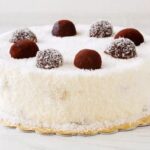Are you wondering how to decorate a wedding cake with fondant flowers? Fondant flowers are a popular choice for adding an elegant and sophisticated touch to wedding cakes. In this article, we will guide you through the step-by-step process of creating stunning fondant flowers and using them to decorate a beautiful wedding cake.
Fondant flowers are delicate, lifelike decorations made from fondant, a pliable sugar paste that can be molded into intricate shapes. These edible works of art have become a staple in wedding cake decoration due to their timeless beauty and versatility. From classic roses to cheerful daisies, fondant flowers can add a touch of romance and elegance to any wedding cake design.
In the following sections, we will provide you with all the information you need to create your own fondant flowers and use them to adorn a stunning wedding cake. From the materials and tools needed to the final finishing touches, we will take you through each step of the process so that you can confidently decorate your own wedding cake with exquisite fondant flowers.
Materials and Tools Needed
Decorating a wedding cake with fondant flowers requires specific materials and tools to ensure the best results. To begin, you will need a batch of fondant in the color of your choice, along with rolling pins to roll out the fondant to the desired thickness. It’s also important to have various flower-shaped cutters in different sizes to create a variety of flowers for your cake.
In addition, you will need a small ball tool for thinning and shaping the edges of the petals, as well as foam pads to place under the flowers while working on them. Edible glue or royal icing will be essential for adhering the fondant flowers to the cake, and a palette knife or small spatula is necessary for lifting and placing the delicate decorations.
Furthermore, having a set of edible food coloring is crucial for tinting the fondant to create realistic-looking flowers in various colors. Lastly, consider investing in some edible shimmer dust or luster dust to add a touch of sparkle and dimension to your fondant flowers.
When decorating a wedding cake with fondant flowers, it’s important to have all these materials and tools readily available before beginning the process. By being properly equipped, you can ensure that creating and placing the fondant flowers on your wedding cake will be an enjoyable and successful experience.
Preparing the Fondant
To properly prepare the fondant for making flowers, you will need to follow these step-by-step instructions:
1. Knead the Fondant: Start by kneading the fondant on a clean surface until it becomes soft and pliable. This will make it easier to work with and mold into various flower shapes.
2. Roll Out the Fondant: Once the fondant is kneaded, use a rolling pin to roll it out to your desired thickness. For larger flowers, you may want a thicker sheet of fondant, while smaller flowers will require a thinner sheet.
3. Use Cornstarch or Powdered Sugar: To prevent the fondant from sticking to the surface or rolling pin, lightly dust your work surface with cornstarch or powdered sugar before rolling out the fondant.
4. Cut Out Petals: Depending on the type of flower you are making, use flower-shaped cutters or a sharp knife to cut out petals from the rolled-out fondant. You can create different sizes of petals for variation in your flower designs.
5. Let It Set: Once your fondant flowers are shaped and cut, allow them to set and dry slightly before assembling them onto your wedding cake. This will help maintain their shape and make it easier to handle during placement on the cake.
Following these steps will ensure that your fondant is properly prepared for creating beautiful and realistic flowers for decorating a wedding cake with fondant flowers. With this foundation, you can move on to the next steps of making different types of flowers and adding colors and details to enhance their beauty.
Making Fondant Flowers
Making Fondant Roses
To create beautiful fondant roses for decorating a wedding cake, start by rolling out the fondant to the desired thickness. Then, use a small round cutter to cut out several circles. Take one circle and shape it into a cone, this will be the center of the rose.
Next, take another circle and thin out the edges with a ball tool or your fingers to create the petals. Wrap these petals around the center and continue adding more petals until you achieve the desired size for your rose.
Creating Fondant Daisies
For making fondant daisies, roll out the fondant and use a small flower cutter to cut out several flowers. Use a smaller round cutter in the center of each flower to create a slight indentation. Then, gently push each petal towards the center using a ball tool to give them a natural curve. To add detail, place a small ball of yellow fondant in the center of each flower.
Forming Fondant Leaves
When making fondant leaves, roll out green fondant and use leaf-shaped cutters to cut out several leaves. Use a veining tool or toothpick to add veins on each leaf for realism. To give them dimension, gently curl each leaf by wrapping it around a paintbrush handle or your finger.
By mastering these different techniques for creating various types of fondant flowers, you’ll have all you need to beautifully decorate your wedding cake with stunning floral designs that are sure to leave a lasting impression on all your guests.
Remember having patience is key when working with fondant as it can be quite delicate and requires gentle handling throughout the process of creating these exquisite decorations for your wedding cake.
Coloring and Shaping
Coloring and shaping fondant flowers is a crucial step in creating a beautifully decorated wedding cake. The colors and shapes of the flowers can add dimension and realism to the overall design, enhancing the aesthetic appeal of the cake.
When it comes to coloring fondant, it’s essential to use gel or paste food coloring to achieve vibrant hues without altering the consistency of the fondant. Remember that a little goes a long way with food coloring, so start with a small amount and gradually add more until you achieve your desired color.
Shaping the fondant flowers also requires precision and attention to detail. Different flower types, such as roses, daisies, or leaves, will require different shaping techniques. For example, for roses, you will need to roll small balls of fondant into petal shapes and then layer them to create realistic-looking blooms.
On the other hand, daisies may require cutting out individual petals and assembling them around a center disc. Take your time with each flower and pay close attention to symmetry and balance in your designs.
Aside from traditional flower shapes, consider adding texture and visual interest by incorporating elements like ruffles or frills into the petals. This can be achieved by gently manipulating the edges of the fondant with specialized tools or even simple kitchen utensils like toothpicks or knives. Embracing creativity in both color choice and shaping techniques will ensure that your fondant flowers stand out as stunning decorations on the wedding cake.
When it comes to positioning colored and shaped fondant flowers on the wedding cake itself, keep in mind that balance is key. Consider varying sizes of flowers, along with different colors and shapes distributed evenly throughout the tiers of the cake for a visually appealing result.
| Materials | Tools |
|---|---|
| Fondant | Rolling pin |
| Gel or paste food coloring | Fondant cutters |
| Cornstarch or powdered sugar (for dusting) | Ball tool (for frilling) |
| Paintbrushes (food-safe) | Toothpicks/knives (for texture) |
Decorating the Wedding Cake
Once you have successfully prepared and made your fondant flowers, it’s time to move on to decorating the wedding cake. The positioning and spacing of the fondant flowers are crucial in creating a visually stunning and balanced design. Start by gathering all your fondant flowers along with any additional decorations or accents you plan to use.
Begin by arranging the largest fondant flowers first, placing them in a visually appealing manner around the base of the cake and working your way up. This will help establish a foundation for your design. As you add smaller flowers, consider varying their placement both in terms of height and proximity to each other. This will create depth and visual interest on the cake.
When placing the fondant flowers, be mindful of balance and symmetry. Aim to achieve an even distribution of flowers around the entire cake, ensuring that no side looks overcrowded or sparse compared to others. Take a step back every now and then to assess your progress from different angles.
Finally, don’t be afraid to experiment with different arrangements before settling on a final design. You can always remove and reposition fondant flowers until you’re satisfied with how they look on the wedding cake.
| Position | Description |
|---|---|
| Around the base | Arranging larger fondant flowers at the bottom as a foundation for design |
| Varying placement | Creating depth by varying height and proximity of smaller flowers |
| Balance and symmetry | Achieving even distribution around the entire cake for visual appeal |
Adding Details
Using Edible Pearls
Adding edible pearls to your fondant flowers can create a sophisticated and elegant look. You can use small edible pearls to mimic flower centers or larger pearls as accents on the petals. To attach edible pearls to your fondant flowers, simply dab a small amount of clear piping gel or edible glue onto the area where you want to place the pearl and gently press it into place.
Applying Edible Glitter
If you want to add some shimmer and shine to your fondant flowers, edible glitter is the perfect choice. You can dust the petals of your fondant flowers with edible glitter using a clean, dry brush. Alternatively, you can mix the glitter with clear alcohol (such as vodka) and paint it onto the petals for a more intense sparkle.
Using Edible Paint
Edible paint is a great way to add vibrant colors and intricate designs to your fondant flowers. You can use small food-safe paintbrushes to hand-paint details onto the petals, such as delicate lines or patterns. Edible paint also allows you to create ombre effects or blend multiple colors for a unique look.
By incorporating these tips and tricks for adding details and accents to your fondant flowers, you can create stunning works of art that will surely impress everyone at the wedding. With just a few simple additions, you can take your beautifully decorated wedding cake with fondant flowers to the next level, making it truly memorable for all who see it.
Finishing Touches
After carefully arranging and placing the fondant flowers on the wedding cake, the final step is to ensure that they are securely attached. One method for securing the flowers to the cake is by using edible glue or royal icing. These adhesives will help to keep the fondant flowers in place and prevent them from shifting or falling off during transportation or display.
Once the fondant flowers are attached to the cake, it’s important to take a step back and assess the overall look of the design. This is the perfect time to make any necessary adjustments, such as repositioning a flower or adding additional details. It’s crucial to pay attention to symmetry and balance when decorating with fondant flowers, so taking a moment to evaluate the placement can make all the difference in achieving a stunning end result.
In addition to securing the fondant flowers and making final adjustments, it’s important to ensure that the wedding cake is ready for display. This includes carefully transporting the cake to its final destination and setting it up in a safe and secure manner. Taking proper precautions during transportation and handling will help to preserve all of your hard work in decorating with fondant flowers and ensure that the wedding cake looks flawless when presented at the event.
Conclusion
In conclusion, learning how to decorate a wedding cake with fondant flowers can truly elevate the overall aesthetic of a wedding. Fondant flowers are not only beautiful and intricate, but they also allow for endless creativity and personalization. They have become incredibly popular in the world of wedding cake decoration due to their versatility and ability to blend seamlessly into any wedding theme or color scheme.
By following the detailed steps outlined in this guide, including preparing the fondant, creating various types of flowers, and adding details and finishing touches, you can achieve a stunning result that will leave a lasting impression on your guests. The process may require time and patience, but the end result is well worth it as it adds an elegant and sophisticated touch to the overall wedding decor.
Overall, beautifully decorated wedding cakes with fondant flowers have the power to transform a reception space. They serve as both a delicious dessert and a visually striking centerpiece. With careful planning and execution, you can create a wedding cake that not only looks exquisite but also reflects the personal style and vision of the couple. So go ahead, unleash your creativity and add your own unique flair to your next wedding cake with meticulously crafted fondant flowers.
Frequently Asked Questions
How Do You Get Fondant Flowers to Stick to a Cake?
Fondant flowers can be made to stick to a cake by using edible glue or royal icing. Prior to attaching them, it is important to gently moisten the area on the cake where the flowers will be placed.
How to Decorate a Cake With Fondant Flowers?
Decorating a cake with fondant flowers involves rolling out the fondant, cutting out flower shapes using cutters, and then assembling and shaping the flowers before allowing them to dry. Once dry, they can be attached to the cake using edible glue or royal icing.
Will Fondant Flowers Melt on Buttercream?
Fondant flowers generally will not melt on buttercream if they are used sparingly and if the cake is not exposed to excessive heat or humidity. However, it’s best to avoid placing fondant flowers directly in sunlight or near sources of heat.

Welcome to my blog about home and family. This blog is a place where I will share my thoughts, ideas, and experiences related to these important topics. I am a stay-at-home mom with two young children. I hope you enjoy reading it! and may find some helpful tips and ideas that will make your home and family life even better!





